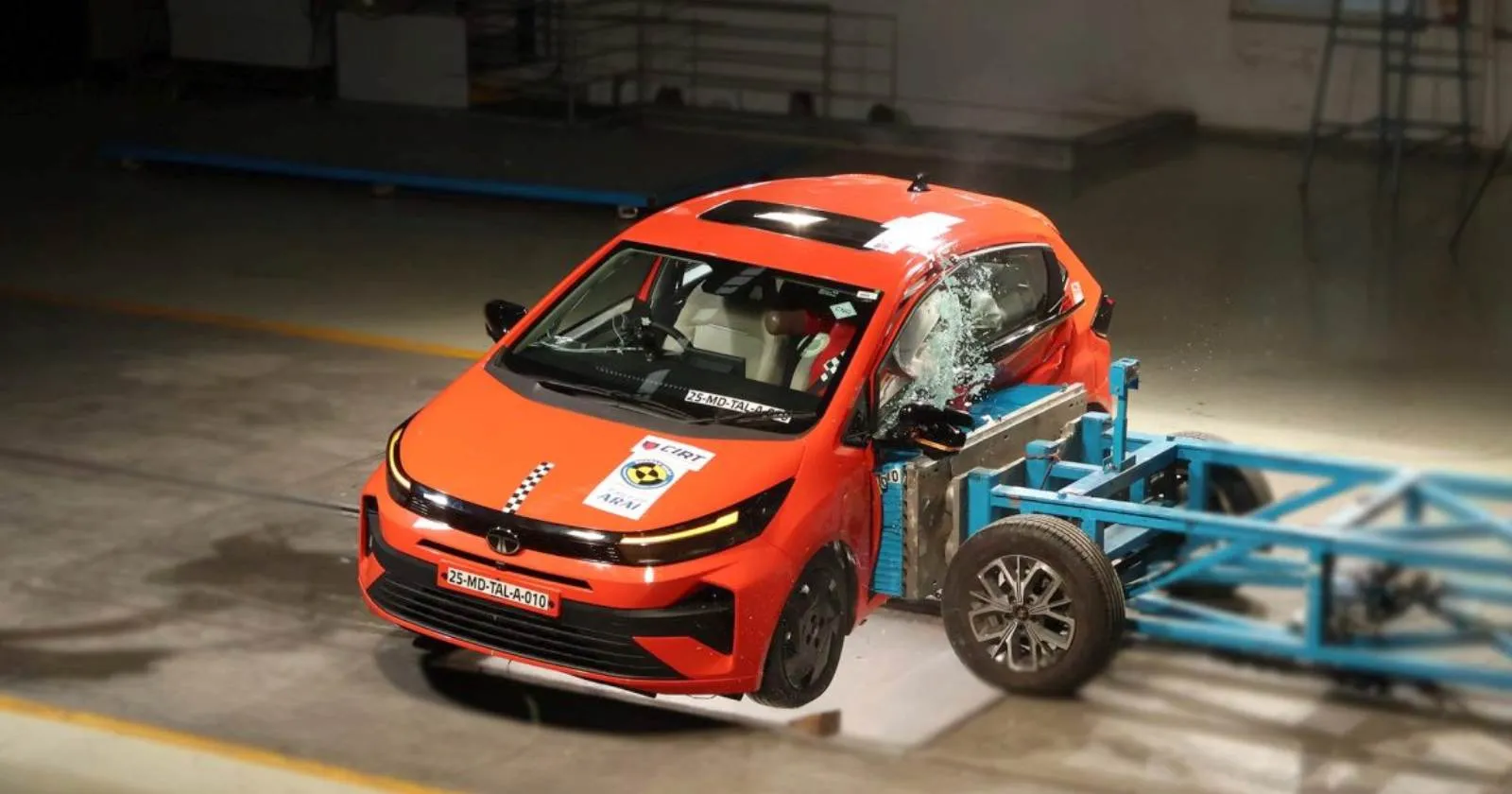
The current BNCAP protocol includes frontal and side impact crash tests.
Share Post

The current BNCAP protocol includes frontal and side impact crash tests.
The upcoming version 2.0 of the Bharat NCAP (New Car Assessment Programme) will be significantly overhauled to include many more parameters and features as part of the calculations for safety ratings. A new draft proposal has been released by the organisation, and stakeholders have till December 20 to submit feedback for consideration before the protocol is ratified. Further drafts are expected as the new protocol is not likely to go into effect until late 2027 when the current one expires.
As per the document, published on the Ministry of Road Transport and Highways’ website, the new version of BNCAP’s testing standards is based on measures already adopted by Euro NCAP, Global NCAP, ASEAN NCAP, and other similar testing bodies.
Under the new protocol, cars will be tested on five broad parameters: Safe Driving (10 percent), Crash Avoidance (10 percent), Crash Protection (55 percent), Vulnerable Road User Protection (20 percent), and Post-Crash Safety (5 percent). These will replace the current Adult Occupant Protection and Child Occupant Protection frameworks that form the basis of score calculations under the current policy.
This means crash tests will become part of a larger evaluation methodology. The final star rating will be calculated based on the score each car achieves out of 100 total points.
The updated set of active as well as passive safety features and design considerations will make a five-star rating harder to achieve, with the aim of raising the bar for safety industry-wide. Moreover, the threshold for achieving a five-star rating will rise from 70 points to 80 points after two years, as manufacturers are expected to improve their offerings over time.
Among the new features proposed to become mandatory to achieve a five-star rating are Electronic Stability Control and Side Head Protection, ie curtain airbags. Vehicles with side-facing seats will be ineligible for a star rating.
Crash testing is proposed to be expanded from the current two tests (front and side impact) to five – simulating offset and full-width frontal as well as rear impact, and crashes with a lateral mobile barrier and an oblique pole. Speeds range from 32kmph to 64kmph depending on the test. Male and female adult as well as child test dummies are to be used for each, and performance will be scored separately. The presence of head restraints and ISOFIX child safety seat anchor points will be considered too.
Car bumpers, windshields and hoods will also have to be designed to limit potential injuries to people outside the vehicle, in case of a collision. Pedestrians and bikers are particularly in focus. Other features that will count towards a score include seatbelt reminders with occupant detection, collision warning systems, drowsiness and attention detection, lane departure warnings, blind spot detection, hill hold assist, and autonomous emergency braking (AEB).
The post-crash safety section, which accounts for a relatively small weightage in the final score, includes mitigations for electrical and fire risks in case of a collision, ease of extrication for occupants, and automatic SOS calls to emergency service.
Bharat NCAP is overseen by the Ministry of Road Transport, but is an independent body. Industry participation is voluntary. Only right-hand drive passenger vehicles on sale in India and weighing less than 3,500kg are eligible for consideration. Base variants of cars are to be tested, and ratings will be applicable for four years.
Mexico Raises Import Duty on Cars, Automotive Components: Indian Industry Likely to Feel Impact
Acko Drive Team 12 Dec, 2025, 2:57 PM IST
Mahindra XUV 7XO Teased Again, Bookings Open on December 15
Acko Drive Team 12 Dec, 2025, 2:04 PM IST
New Nissan MPV Debut On 18 December: Here’s What We Know
Acko Drive Team 12 Dec, 2025, 1:57 PM IST
Mercedes-Benz India to Raise Prices by 2% Citing Forex Rate Shifts
Acko Drive Team 12 Dec, 2025, 11:46 AM IST
Vida Launches DIRT.E K3: Size-Adaptive Electric Motorcycle for Kids
Acko Drive Team 12 Dec, 2025, 10:05 AM IST
Looking for a new car?
We promise the best car deals and earliest delivery!
